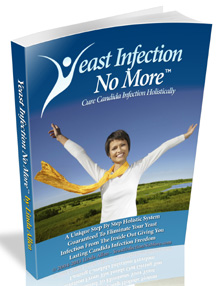Vaginal Yeast Infections
Free Video Reveals 1 Weird Tip To Quickly Cure Your Candida Overgrowth & Enjoy Permanent Freedom From Yeast Infections In As Little As 12 Hours - Guaranteed!
>> Yeast Infection Guaranteed Treatment Click Here <<
Vaginal yeast infections are so common that about ? of all women will have at least one at some time during their lives, and nearly half of all women have more than one. Yeast infections are caused by a fungus, Candida Albicans, which is normally present in the vagina. Candida is usually kept under control by bacteria that are also normally present in the vagina, notably Acidophilus. Under certain circumstances, the Candida is able to grow unchecked, and an infection results.
SYMPTOMS: The symptoms of a vaginal yeast infection include:
? Itching and/or burning of the vagina and vulva
? Cheesy, curd-like white vaginal discharge
? The discharge has a ?yeasty? smell, like baking bread or beer
? Swelling of the vulva
? Pain with intercourse
CAUSES: The direct cause of a vaginal yeast infection is Candida. There are a number of circumstances that allow Candida to become a problem. Some of them are:
? An alkaline vaginal environment
? A warm, moist vaginal environment
? Diabetes and high blood sugar
? Hormonal changes
? Anything, such as antibiotics, that decreases the number of bacteria present
? Allergies and irritants
? Injury or irritation, which can occur with sexual intercourse.
? Immune deficiency, as with HIV/AIDS, immunosuppressive medications or some other illnesses
Candida can be sexually transmitted, too. Men can become infected, but usually don?t have symptoms. The man can then reinfect his partner. Sexual transmission occurs more frequently between lesbian partners because women are more susceptible to yeast infections than men.
MEDICAL TREATMENT It is important to see a physician or nurse practitioner the first time you believe you have a vaginal yeast infection. Several other vaginal infections, such as bacterial infections and trichomoniasis, have similar symptoms. You need the right diagnosis to get the right treatment.
You can usually treat subsequent yeast infections with over-the-counter antifungal medications. If a yeast infection does not get better with over-the-counter medications, or if it comes back right away, you should see a physician to get a prescription-strength medication. Some yeast infections do not respond to over-the-counter medications.
ALTERNATIVE TREATMENTS Many women are able to self-treat vaginal yeast infections (after the first one is diagnosed by a physician) with yoghurt. Yoghurt contains the bacteria that normally keep yeast in check. Applying plain, unsweetened yoghurt with live culture to the vulva and inserting it into the vagina twice a day for a week works well for many ladies. Eating yoghurt seems to help, too.
Aloe vera applied to the vulva and vagina won?t cure the infection, but it may relieve the itching and burning. DO NOT use baking soda for itch relief; it will make the vagina more alkaline, and can make the infection worse.
SELF CARE AND PREVENTION If you are prone to getting yeast infections, there are a number of things you can do to prevent them.
? Avoid douches, feminine hygiene sprays, or perfumed feminine hygiene products
? Avoid colored or perfumed toilet paper
? Avoid bubble baths
? Make sure your vaginal area is thoroughly dry. If necessary, dry with a blow dryer on the cool setting.
? Some ladies find that limiting yeast-containing foods and sugar helps.
? Wear cotton underwear and change them frequently. Wash them in hot water and dry in a hot dryer. Some people recommend ironing them with a hot iron to kill any yeast that remain.
? Try changing laundry detergents or double rinse your underwear.
? Don?t have intercourse or use tampons during an active infection
Yeast infections are something most women have to deal with at one time or another. It is important to get an accurate diagnosis, so be sure to see a physician the first time you have symptoms of a yeast infection. After that, there is a great deal you can do to prevent future infections, and to manage the ones that do occur.
ABOUT THE AUTHOR: Penny Watkins is a freelance writer working for http://pillspills.net. She worked for over twenty years as a registered nurse, specializing in cardiovascular nursing.
Penny Watkins is a freelance writer at PillsPills Pharmacy who worked as a critical care nurse for over twenty years, specializing in cardiovascular nursing.
Labels: acidophilus_yeast_infection, diabetes_and_yeast_infection, male_yeast_infection, yeast_infection_in_child, yeast_infection_symptom_man

